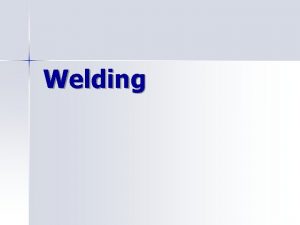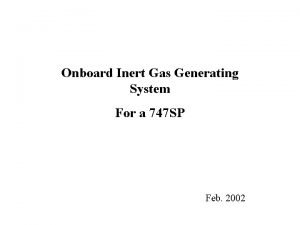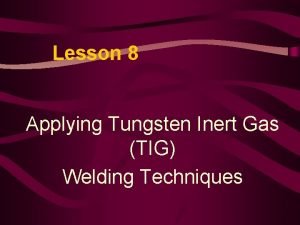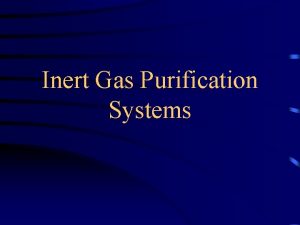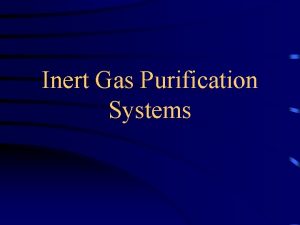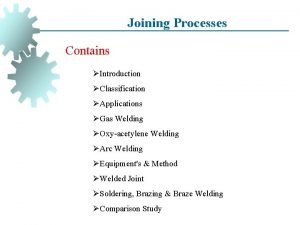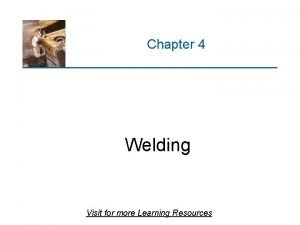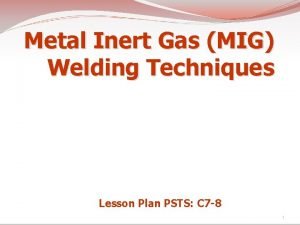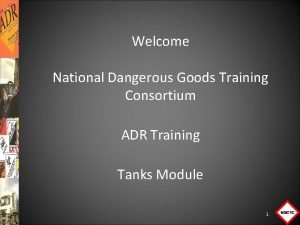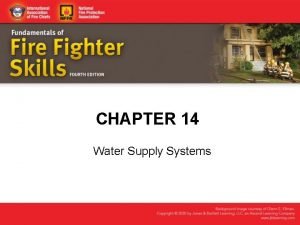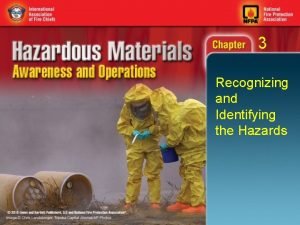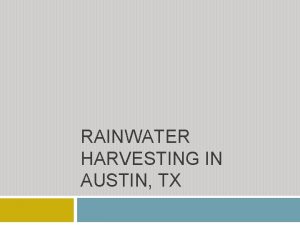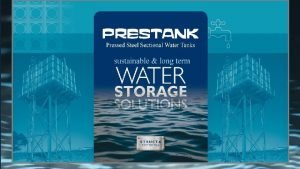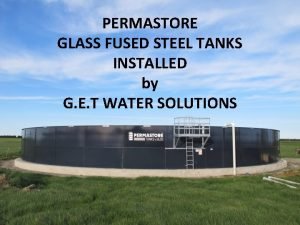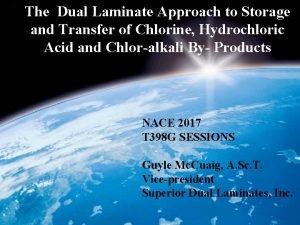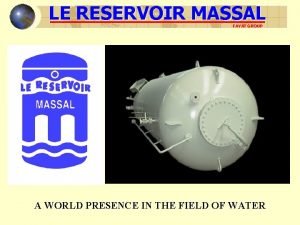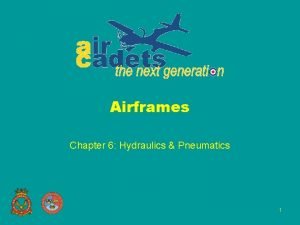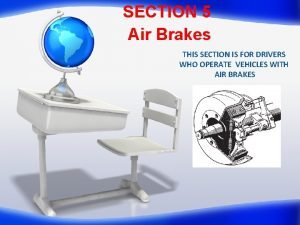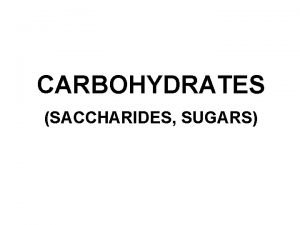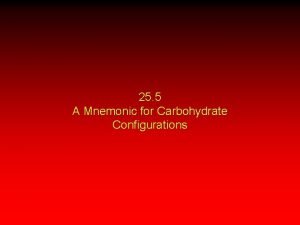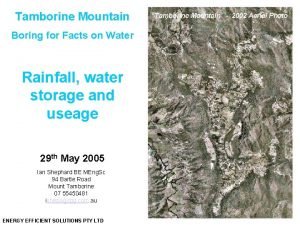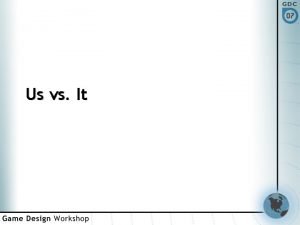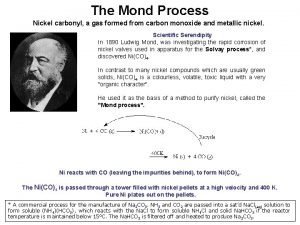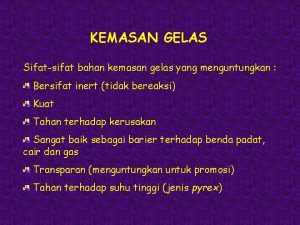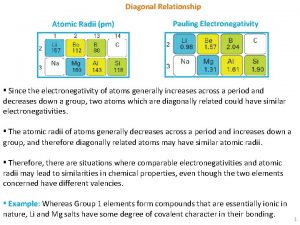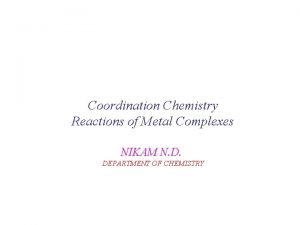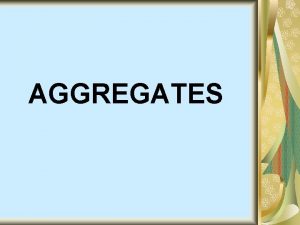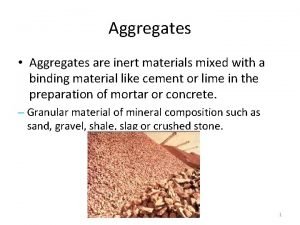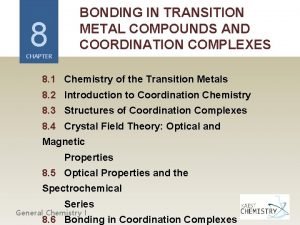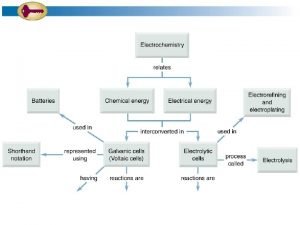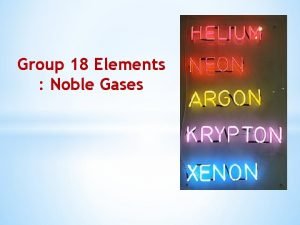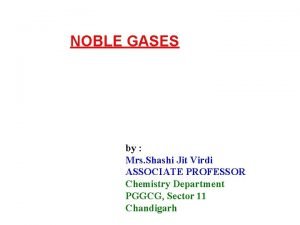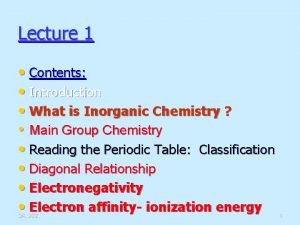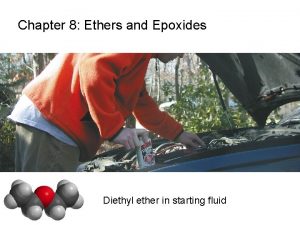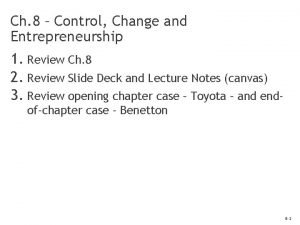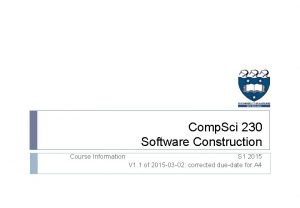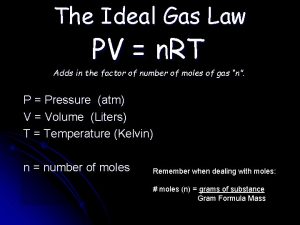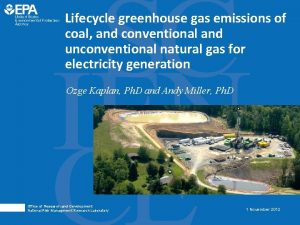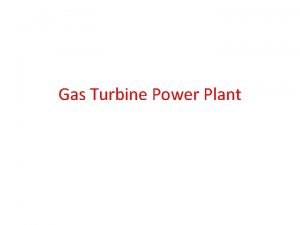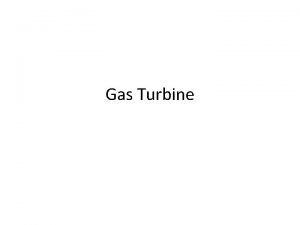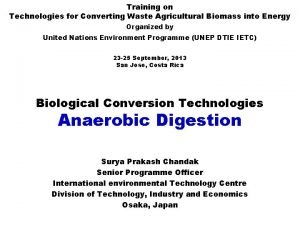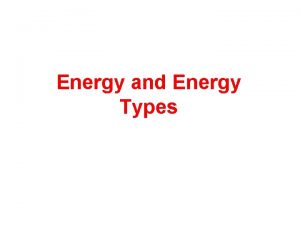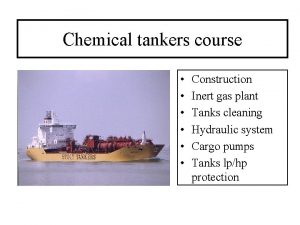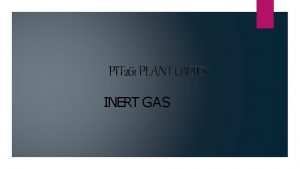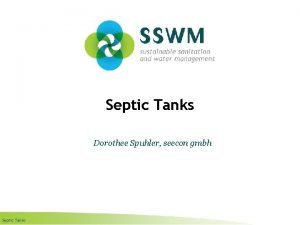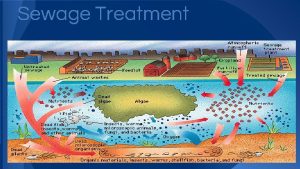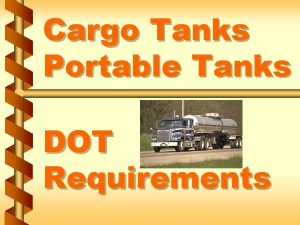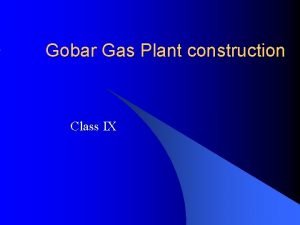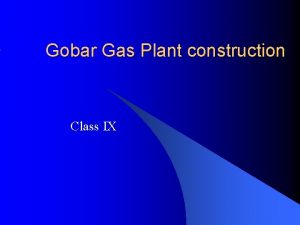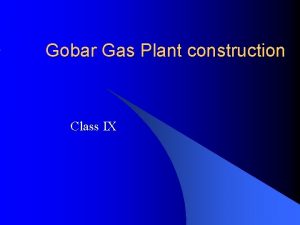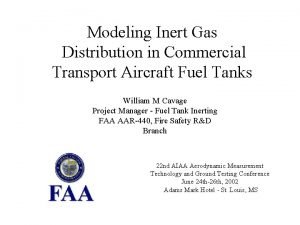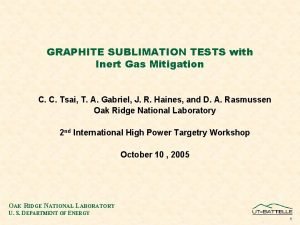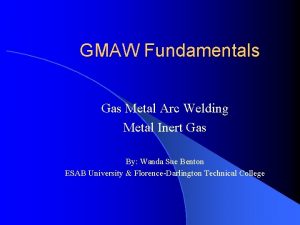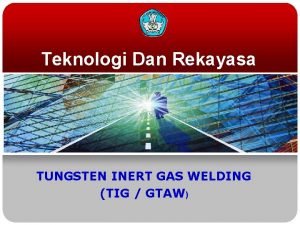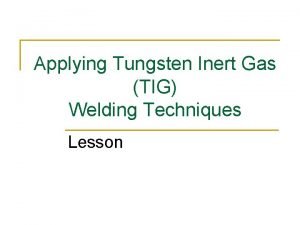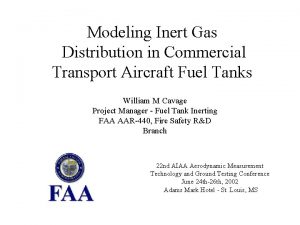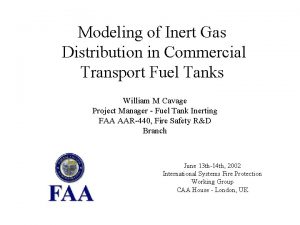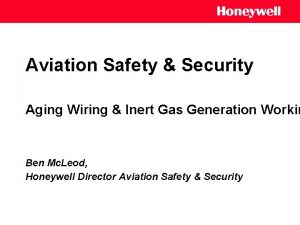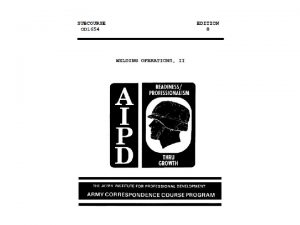Chemical tankers course Construction Inert gas plant Tanks



























































- Slides: 59

Chemical tankers course • • • Construction Inert gas plant Tanks cleaning Hydraulic system Cargo pumps Tanks lp/hp protection

Chemical Tankers Types 1. ‘Type 1’ ship is a chemical tanker intended to transport Chapter 17 of the IBC Code products with very severe environmental and safety hazards which require maximum preventive measures to preclude an escape of such cargo. 2. ‘Type 2’ ship is a chemical tanker intended to transport Chapter 17 of the IBC Code products with appreciably severe environmental and safety hazards which require significant preventive measures to preclude an escape of such cargo. 3. ‘Type 3’ ship is a chemical tanker intended to transport Chapter 17 of the IBC Code products with sufficiently severe environmental and safety hazards which require a moderate degree of containment to increase survival capability in a damaged condition. [2]






Cargo heating Deck mounted cargo heaters eliminate the need for in-tank heating coils. The cargo tank interior can be made with flush tank top free from coils, brackets and clamps. A flush tank top facilitates quicker stripping with less cargo remaining in the tank. The cargo tank washing can be performed quicker, with less consumption of washing water and less slop handling.

Cargo cooling The Framo cargo cooling system enables chemical carriers to also transport low-boiling-point cargoes and semi-gases. Cargoes such as Propylene Oxide and Isoprene are often transported on board chemical carriers which use cooling system to maintain a safe cargo temperature

Cargo circulation To prevent sediments settling on the tank-top during transport and to maintain the liquid quality, a Framo diffusor can be installed on the outlet of the dropline. During voyage cargo is circulated through the diffusor by running the cargo pump at intervals.

Submerged ballast pumps Installation of ballast pumps inside the double side ballast tanks in combination with a submerged cargo pump in each cargo tank make the pump room superfluous. This arrangement provides a safer ship design and make more space available for carrying cargo. Submerged ballast pumps have become the standard arrangement in modern tankers and FPSOs.

Stainless steel chemical tankers The stainless steel chemical tanker fleet comprises the most sophisticated tankers sailing on the high seas. These ships are constructed with stainless steel cargo tanks, a fully segregated cargo pumping arrangement and designed to carry the most aggressive, corrosive or volatile liquids.

Chemical/product oil tankers Most of the world’s production of vegetable oils, commodity chemicals and refined petroleum products are transported on a large fleet of modern chemical/product tankers. Typically designed with coated cargo tanks, six to eight cargo segregations, no pump room, submerged ballast pumps, in-tank cargo pumps and deck mounted cargo heaters

OBO carriers A one-pump-per-hold system that is easy to operate and clean has been specially designed for combination vessels that are alternating between wet and dry cargoes. The cargo pumps are installed in protective enclosed corrugations between the holds. Cargo piping and cargo heaters are located on deck.

Floating production, storage and offloading (FPSO) FPSOs require the highest standards for safety and operation regularity. A reliable and redundant cargo offloading system is essential.

Inert Gas Properties SASTAV (Composition) N 2 Dušik (N 2) (By ship IGG) 99. 99 % Preko kotla (by Boiler) 85 – 86 % CO 2 1 ppm 14 – 15 % CO 1 ppm 0. 1 – 0. 3 % O 2 1 – 8 ppm 0. 1 – 0. 5 % SO 2 0 20 ppm H 2 O 5 ppm 0. 015 gr/nm 3 rosište - 70 o. C 50 – 55 o. C

Deck view on ch. Tanker type I P-v brakers (safety valves) High purity Nitrogen tank

Pranje tankova i zadržavanje ostataka 1. Predpranje (morem na min 20 o – više puta ako treba ili slatkom vodom za neke terete – ide na kraj) 2. Pranje (morem ili sl. vodom i kemikalijama – izbor prema teretu) 3. Ispiranje (more ili slatka voda – toplo ili hladno) 4. Ispiranje slatkom vodom 5. Propuhivanje parom (toluen + inertni plin + ispiranje slatkom vodom za neke terete, npr. alkohol. Test na CH, soli i permanganate) 6. Iscjeđivanje (ejektori ili dr. samosisne ili centr. p/p, ili suhi zrak, ili inertni plin pod tlakom) 7. Posušivanje (tankova, cjevovoda, pumpi - suhi zrak, ili inertni plin pod tlakom)

Cargo Tank Washing and residues retention 1. Prewash (with sea water - min. temp. of 20 o C – several times if required or with fresh water for some cargoes – prewash residues must be disharged ashore) 2. Main wash (with sea water or s. w. with chemicals – choice of chemical depends of cargo) 3. 4. 5. Rinseing (with cold or warm s. w. or f. w. ) Fresh Water Rinsing (for cargo tank protection) Steam Purging (toluen + inert gas + f. w. rinsing for some cargo like alcohol. Obligatory test for CH, salts and permanganates) 6. Stripping (centr. pumps, ejektors or others selfpriming pumps or dry air or inert gas under pressure) 7. Drying (tanks, pipelines, pumps – with dry air or inert gas under pressure)



Stripping – povijest (history)

The view of cargo tank washing machine driving mechanisam – driven by cold or warm fresh or sea water with addition of chemichals (depends of cargo residues) Driving mechanisam The fast connection for f. w. or s. w. connection

Tank washing connection

3 osnovne grupe tereta l Životinjska i biljna ulja i masti (pranje Na. OH ili KOH – tankovi od SS ili EP – obavezno ispiranje toplom vodom) l Mineralna ulja (mješavina vode, deterđenta, emulgatora i sintetičkih sapuna, nekad kao dodatak i bazni benzin – obavezno ispiranje vodom zbog CH) l Petrokemijski proizvodi i druge otopine (kod tereta s niskim rosištem – isparavanjem / kod tereta s rosištem preko 100 o. C pom. petrokemijskih solvenata, tople vode i pare)

3 Main Cargo Groups l Animal and vegetable oils and fats (washing with Na. OH or KOH – SS tanks or EP (epoxy coated) mandatory rinse with warm water) l Mineral oils (washing with a mixture of water, detergents, emulsifiers and synthetic soap, sometimes a supplement of base gasoline should be used – FW rinsing is obligatory because of HC l Petrochemical solutions (for a products and other cargoes with a low dew point evaporation - cargoes with a dew point over 100 °C should be washed with petrochemical solvents, hot water and steam)

Grijanje (Heating) Recirkulacija (Recirculation) Hlađenje (Cooling)

VAŽNO ! Tank je opasan i nekoliko sati (dana) nakon pranja ► Check lista prije ulaza u tank ► Dodavanje aditiva-emulgatora za lakše pranje i održavanje kvalitete tereta ► Paziti na kompatibilnost aditiva, te materijala tankova i opreme s kemikalijama ► Balastiranje zabranjeno kod nekih tereta dok se kompletno ne iskrca tank tereta s kojim je balastni tank u dodiru (H 2 SO 4, HCl, HNO 3, H 3 PO 4, i sl) ► Odlaganje ostataka u slop-ove (3 stupnja) ► Fenol zahtijeva konstantnu temp. Od 45 -55 (uz aditiv do 60 o. C) – konstantna recirkulacija i ne prekidati iskrcaj (nitko na brod i nitko s broda) ►

IMPORTANT ! ► ► ► ► Cargo tank is dangerous several hours (days) after washing Before cargo tank entering the check list is obligatory – signed by officer in charge The aditives – emulgators are added into cargoes for easiest washing and cargo quality remaining Pay attention on Cargo tanks matherials and other equipment compatibilities with additives The ballasting of ballast tank which is in border with cargo tank is forbiden in the case of higly reactive cargo with sea water (H 2 SO 4, HCl, HNO 3, H 3 PO 4, etc. ) Cargo tank washing residues must be transfered to sloop tanks (3 stupnja) Fenol (for example) requires the constant temperatures of 45 -55 (60 o. C if additive is added) – constant recirculation during unloading and discharging must not be interupted

Sustav hidraulike (Hydraulic System) n n n Pumpe hidraulike (Hydro_pumps - Power Pack) – driven by el. motor or diesel motor Razvod na pumpe tereta i ostale uređaje (Hydraulic oil distribution to cargo pumps and other hydraulic equipment) Tlačni cjevovod (Pressure Pipes - 200 bar) Povratni vod (Return Pipes - cca. 3 bar) Power Pack qapacity determine the total unloading capacity rate


Daljinska kontrola 1. 2. 3. 4. 5. 6. 7. 8. 9. 10. 11. 12. 13. 14. 15. Oil tank Oil Filter Oil Cooler Hydraulic Pump Pressure regulating valve Submersible centrifugal pump (hydraulicaly driven) Pump’s pressure regulator (rpm regulator) CCR Control Panel Pressure Sensor Pressure regulating valve servo motor Electronic control unit Emergency Portable Pump Low pressure pipe connection Portable pump control unit Discharge pipeline

Pumpe tereta (Cargo pumps) • Jednostepene ili višestepene – single or multistages • Uronjena pumpa s dugom osovinom (deepwell pump) – el. mot. or hydromotor on the deck connected with the pump w. long shaft • (submersiblle) – hydromotor or el. motor together with the pump into tank • Prijenosna uronjena pumpa – portable submersible pump





Ceramical sleeve



Cijev izlaza tereta iz linije tereta Stripping line Manometar Propuhivanje koferdama Cofferdam puging Propuhivanje linije tereta Main cargo line purging Cijev za regulaciju tlaka (broja okretaja pumpe) – spoj s kontrolnom kabinom Pipe for remote control – connected w. CCR





Drenaža manifolda


Suhi zrak ili dušik na pumpu






Pilot-operated is used on any types of tanks Spring-loaded is used on tanks type “C” (under pressure)





 Welding positions
Welding positions Aircraft onboard inert gas generation system
Aircraft onboard inert gas generation system Tig welding definition
Tig welding definition Inert gas purification
Inert gas purification Inert gas purification
Inert gas purification Seam welding process
Seam welding process Tig (tungsten inert gas)
Tig (tungsten inert gas) Tig (tungsten inert gas)
Tig (tungsten inert gas) Mig welding
Mig welding Adr consortium
Adr consortium Chapter 14 water supply systems answer key
Chapter 14 water supply systems answer key Mc-338
Mc-338 Rainwater tanks austin
Rainwater tanks austin Domestic rainwater harvesting
Domestic rainwater harvesting Hot dipped galvanized pressed steel tank
Hot dipped galvanized pressed steel tank Glass fused steel tanks
Glass fused steel tanks Chlorine drying tower design
Chlorine drying tower design Reservoir massal
Reservoir massal Hydraulic system advantages
Hydraulic system advantages Snub braking method
Snub braking method Monosugar
Monosugar What is the mnemonic device for carbohydrates
What is the mnemonic device for carbohydrates Water tanks tambourine mountain
Water tanks tambourine mountain Tanks vs robots
Tanks vs robots Unity network transform child
Unity network transform child In mond's process nickel is made to react with
In mond's process nickel is made to react with Examples of inert and labile complexes
Examples of inert and labile complexes Bahan kemasan logam
Bahan kemasan logam Diagonal relationship definition
Diagonal relationship definition Inert and labile complexes
Inert and labile complexes Adaptive culture from inert culture
Adaptive culture from inert culture Are inert materials such as sand and gravel
Are inert materials such as sand and gravel Inert aggregate
Inert aggregate Inert and labile complexes
Inert and labile complexes Image of galvanic cell
Image of galvanic cell Inert gases properties
Inert gases properties What is noble gas
What is noble gas Inert organizational culture
Inert organizational culture Inert organizational culture
Inert organizational culture Introduction to inorganic chemistry
Introduction to inorganic chemistry Epoxide plus grignard
Epoxide plus grignard Companies with an inert culture
Companies with an inert culture Software construction course
Software construction course How to install a lintel in a single brick wall
How to install a lintel in a single brick wall Course title and course number
Course title and course number Chaine parallèle muscle
Chaine parallèle muscle Gas laws crash course
Gas laws crash course Scope of plant breeding
Scope of plant breeding Plant breeding for disease resistance
Plant breeding for disease resistance Plant introduction in plant breeding
Plant introduction in plant breeding Tronsmo plant pathology and plant diseases download
Tronsmo plant pathology and plant diseases download Tronsmo plant pathology and plant diseases download
Tronsmo plant pathology and plant diseases download Albugo eye
Albugo eye Natural gas power plant efficiency
Natural gas power plant efficiency Advantages and disadvantages of combined cycle power plant
Advantages and disadvantages of combined cycle power plant Gas turbine classification
Gas turbine classification Bio gas plant
Bio gas plant Gobar gas
Gobar gas Biogas plant
Biogas plant Ideal gas vs perfect gas
Ideal gas vs perfect gas
